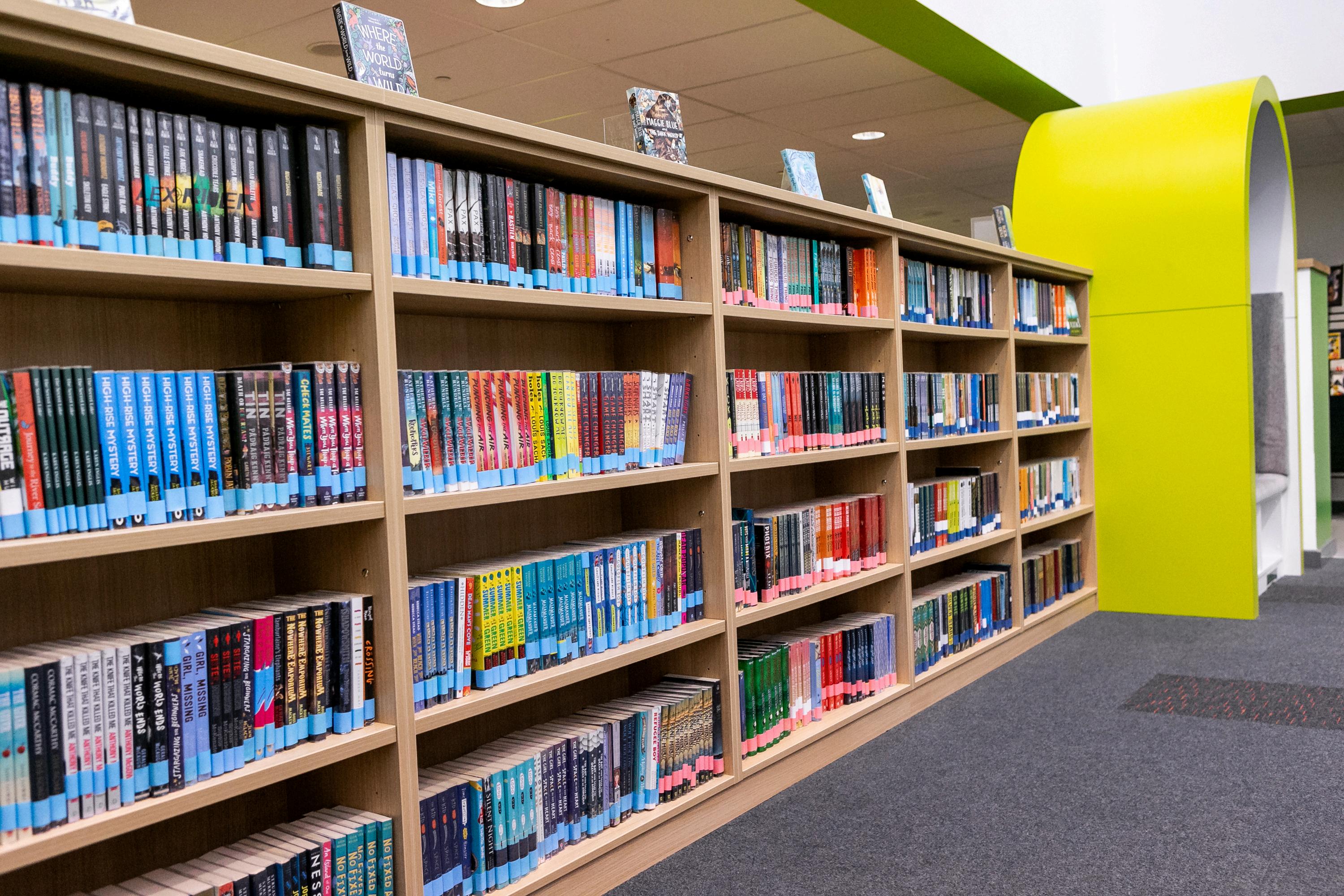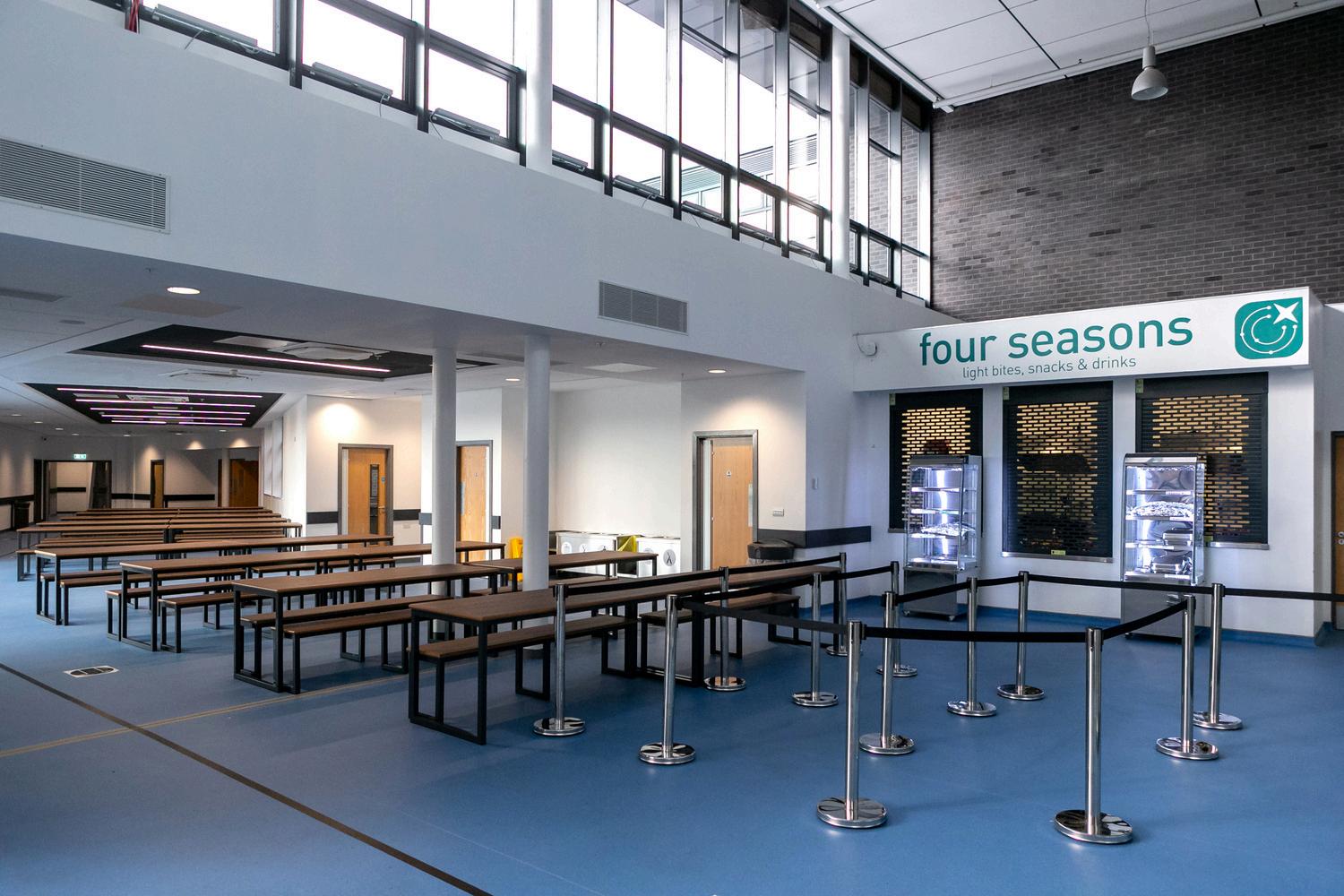QUALITY OFEDUCATION
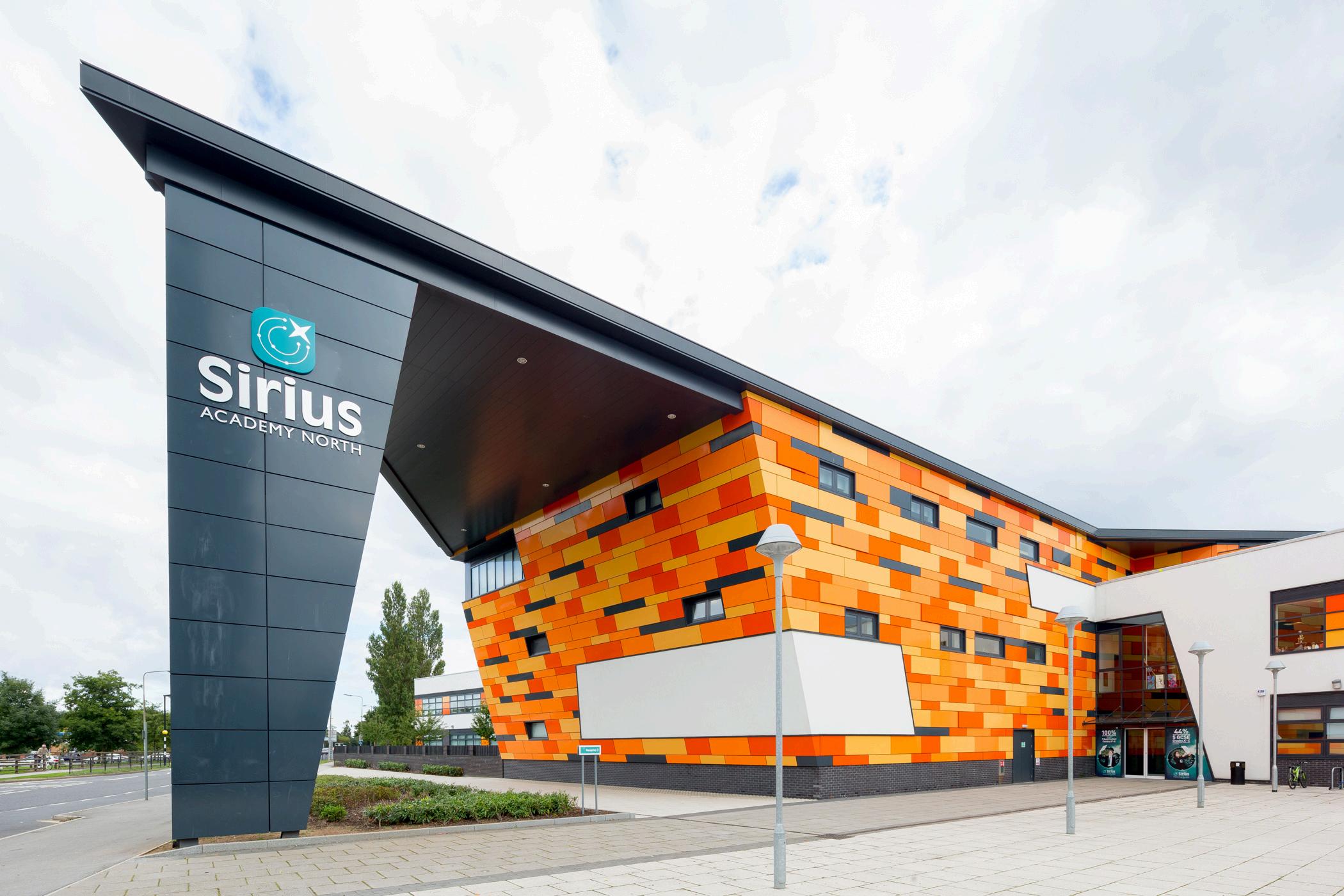
“Our goal at Sirius Academy North is to focus on utilising the NOW, open doors to the NEXT and lay the strong foundations for the LATER. ” 2025 - 2026
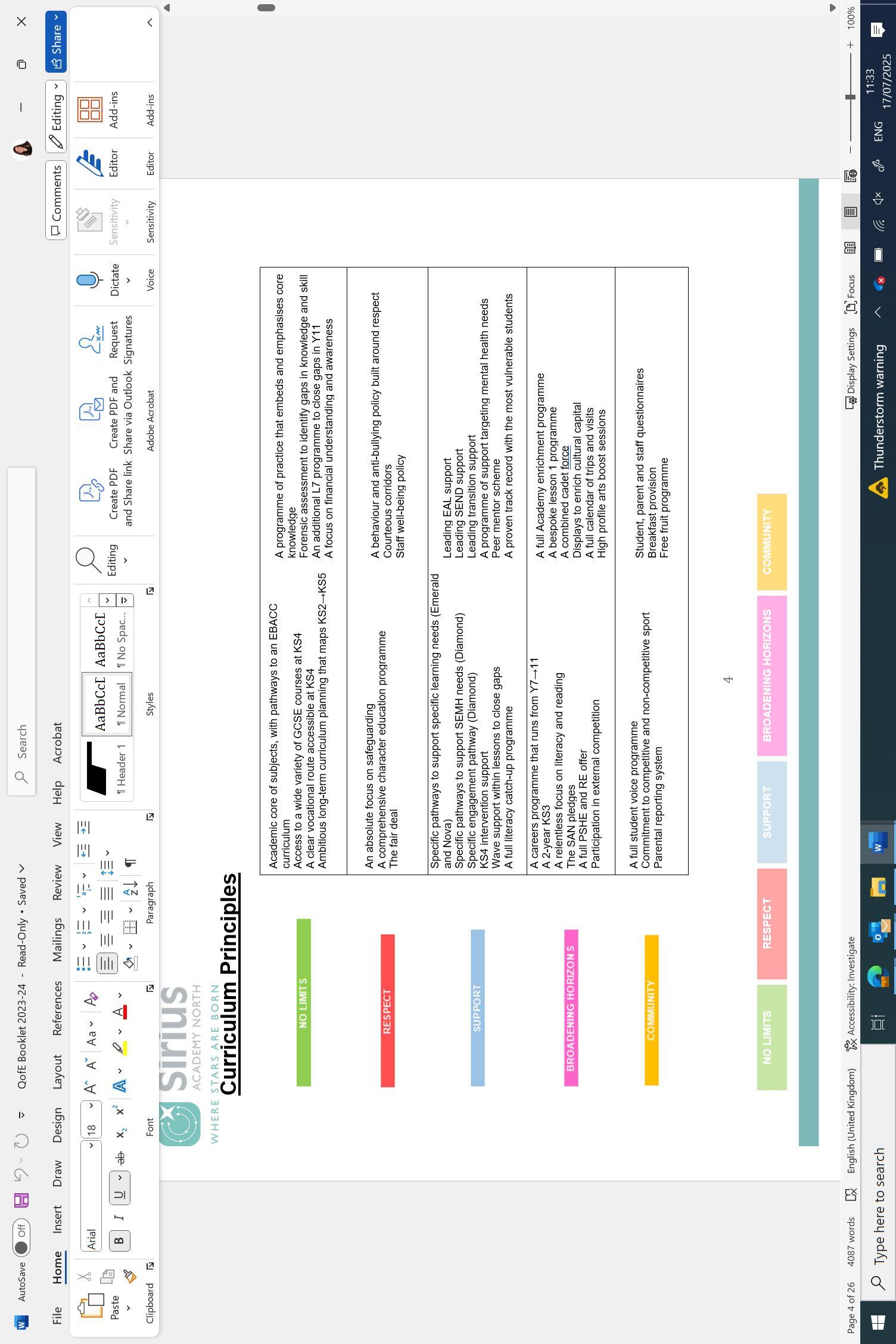


“Our goal at Sirius Academy North is to focus on utilising the NOW, open doors to the NEXT and lay the strong foundations for the LATER. ” 2025 - 2026


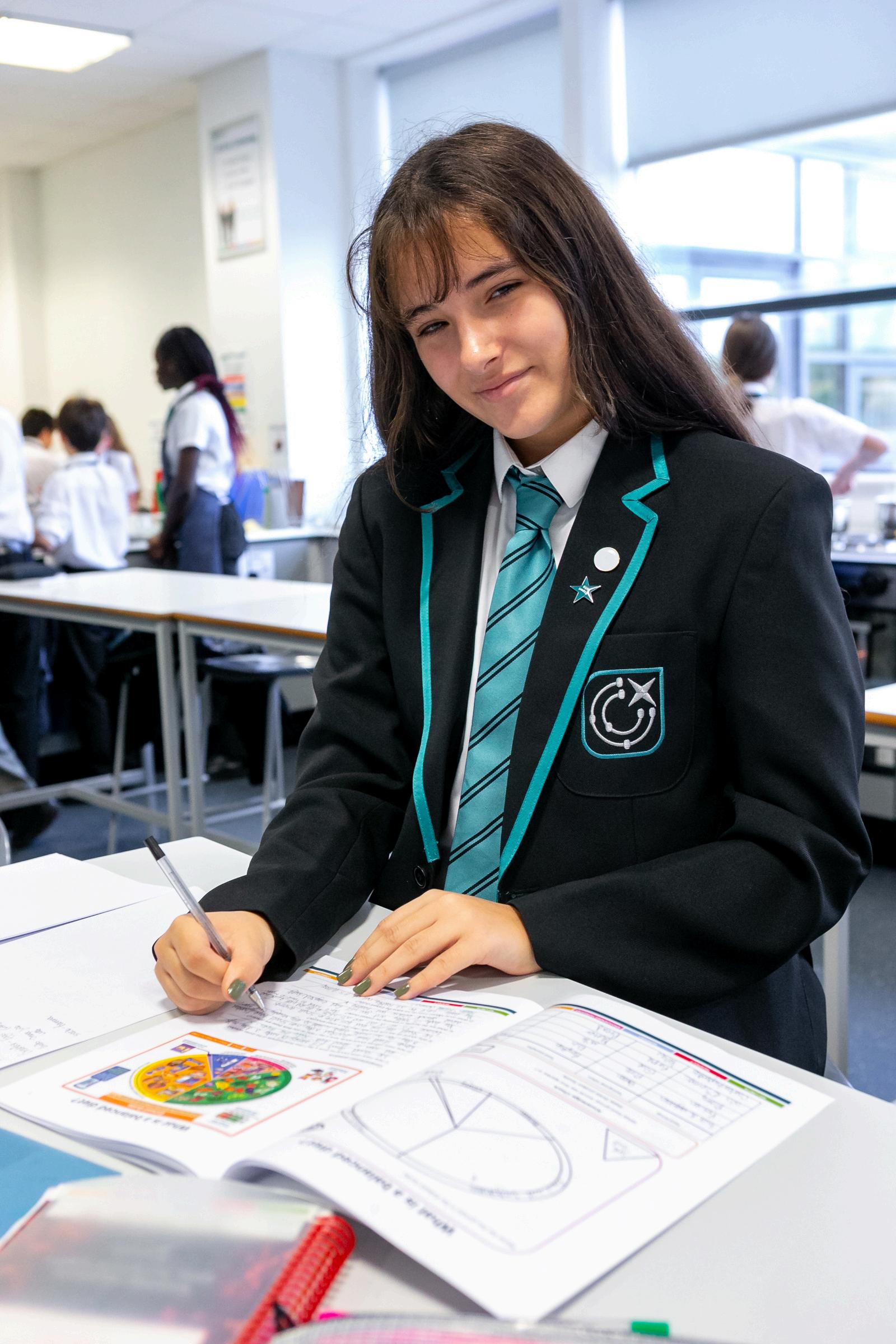

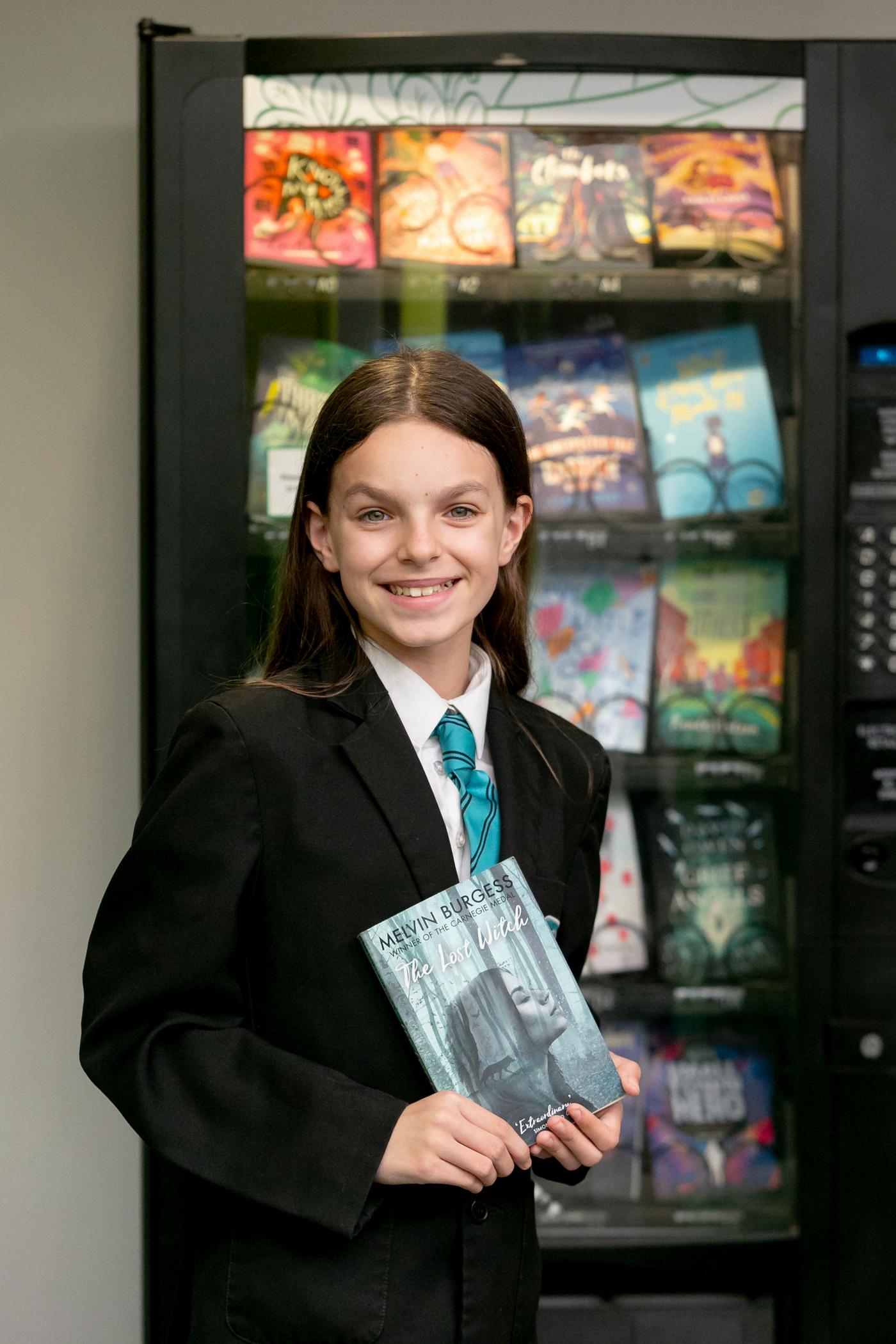
Main academic pathway that majority of pupils follow.Students work through a curriculum designed with GCSE as their endpoint.Each department area has in place a robust curriculum that meets or exceeds the needs of the National curriculum at KS3.
A pathway that is an alternative curriculum route designed for students who are currently unable to access the Ruby curriculum due to significant barriers to learning. Students on the Emerald Pathway follow a highly differentiated curriculum tailored to their individual starting points. The aim is to support steady and meaningful progress, helping to close the gap between them and their peers and, where appropriate, enable a successful transition to the Ruby Pathway.
A pathway for students for which English is not their first language and as such provides a significant barrier to learning.
An adapted version of the Ruby curriculum is followed, with an emphasis on communication and vocabulary, with the aim of supporting students to transition successfully into Ruby groups as their grasp of the English language improves.
A specialist SEND unit with places allocated by the Local Authority SEND Team for learners with an Education, Health and Care Plan (EHCP). The Nova Rooms curriculum is designed to develop communication, independence, and life skills, preparing students for adulthood. At Key Stage 4, students follow a core curriculum that includes Entry Level qualifications, selected option subjects, and AQA unit awards tailored to their individual needs.

Each subject curriculum has been researched and refined by subject expert curriculum leaders to provide our students with the best knowledge and skills available. Where possible, this has also been peer reviewed to ensure it is of the highest standard.
The sequencing is cyclical to provide opportunities to build upon and stretch our students’ understanding, striving for the highest future pathways in academia or the workplace, as well as revisit and embed core concepts. Each subject is also mapped against the National Curriculum or KS4 specification, with additional challenge introduced to broaden our students’ horizons. The goal is to have continuous threads that run from KS2→KS5, allowing students multiple opportunities to revisit, embed and stretch their knowledge within a subject.
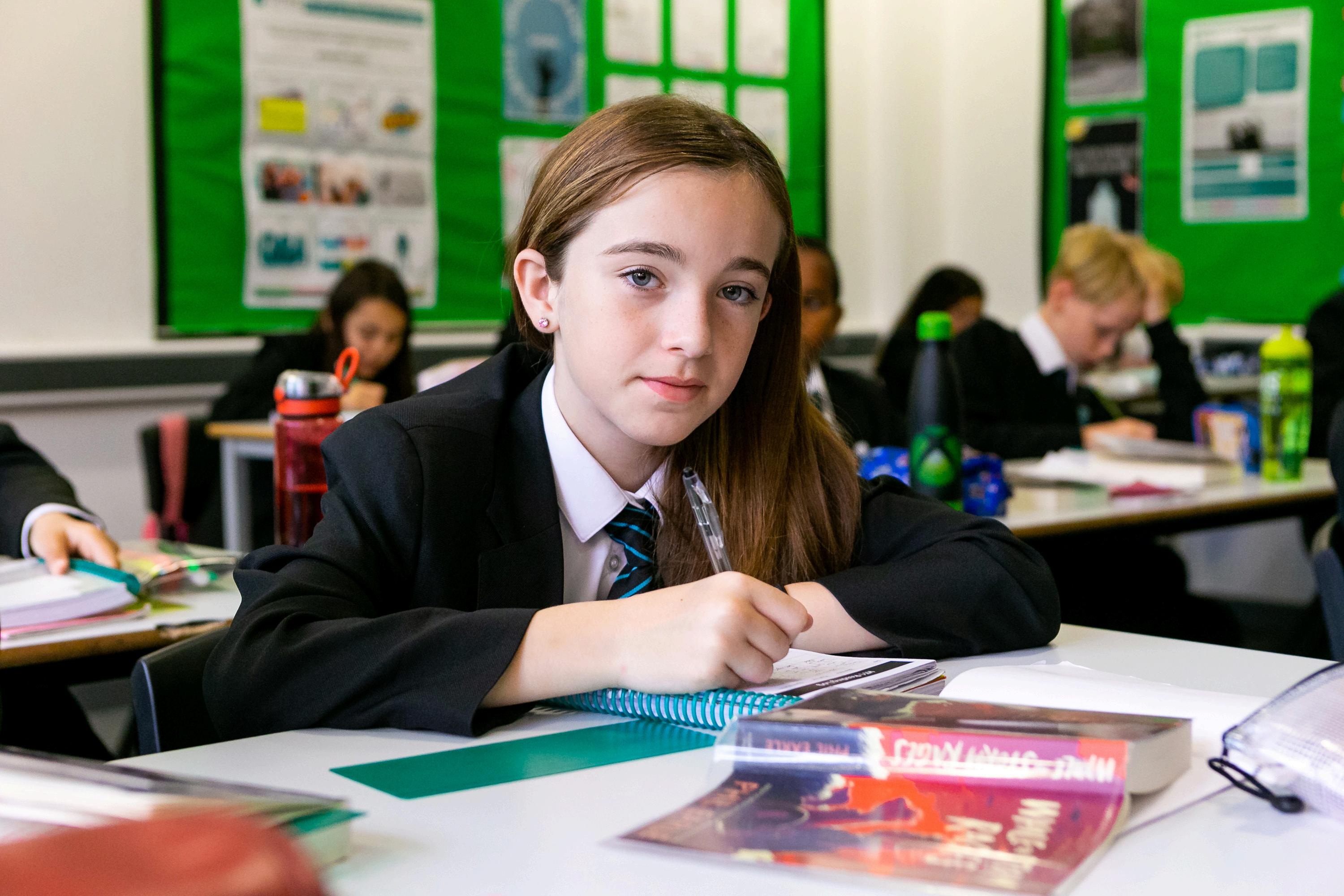
All subjects follow the same structure:
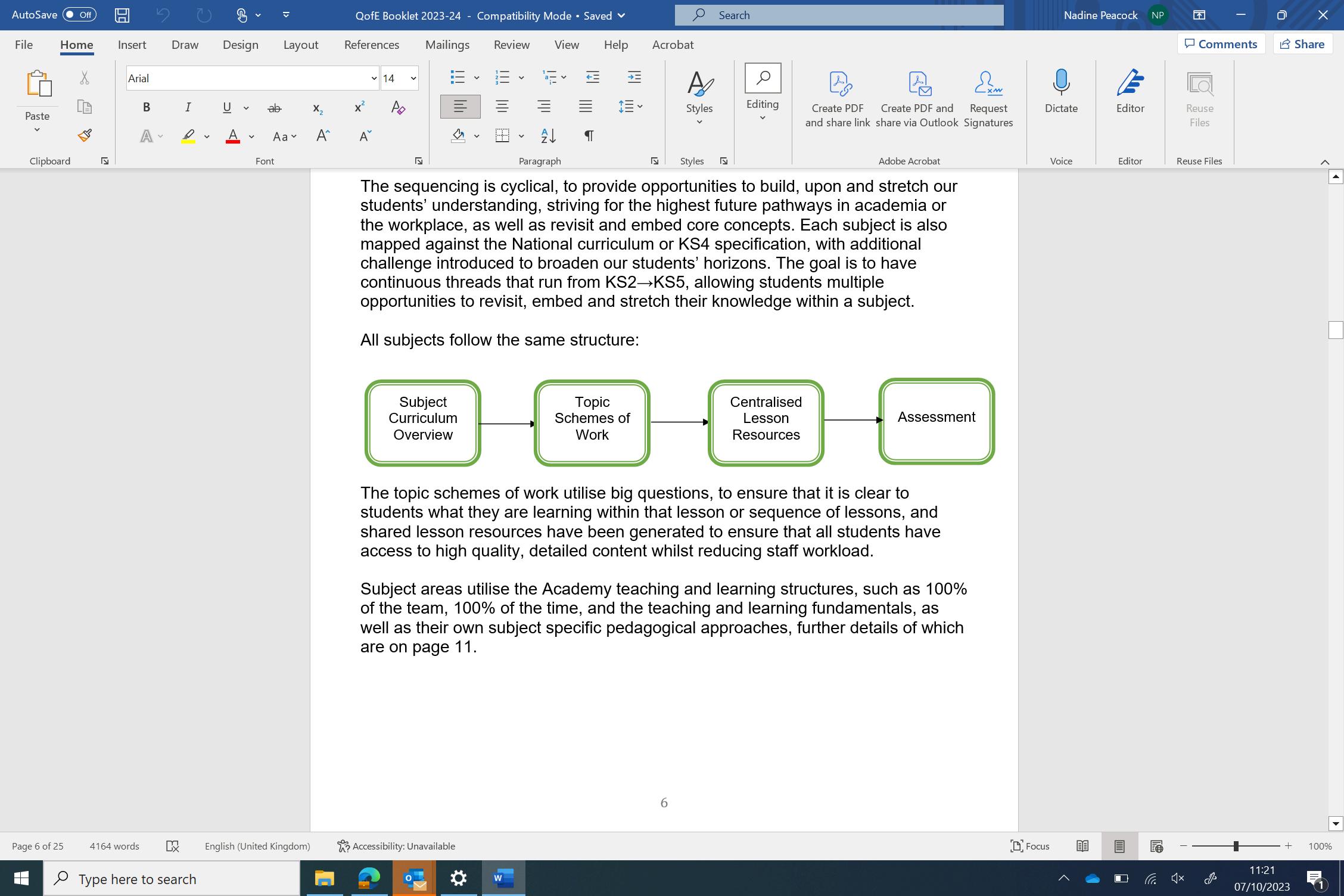
The topic schemes of work utilise big questions to ensure that it is clear to students what they are learning within that lesson or sequence of lessons. Shared lesson resources have been generated to ensure that all students have access to high quality, detailed content whilst reducing staff workload.
Subject areas utilise the Academy teaching and learning structures, such as 100% of the team, 100% of the time, and the teaching and learning fundamentals, as well as their own subject specific pedagogical approaches. Further details of which are on page 11.
As part of our commitment to broaden our students’ horizons and prepare them with strong foundations for the later, we ensure they have access to a robust programme of personal development.
This aims to develop student’s character; understanding of fundamental British values and social, moral, spiritual and cultural development.
Key features of the PD curriculum:
-Lesson 1 programme
-Life lessons
-Religious Education
-Calendared careers events for all year groups
-Assembly programme
Lesson 1 is high profile and enables an effective start to the day. The lesson 1 programme includes elements of subject support, reading, key messages and personal development
Key features within lesson 1:
-Reading
-Student democracy
-Weekly reflection
-Appreciations
-Assembly
-Character Education
-Rewards and Celebrations
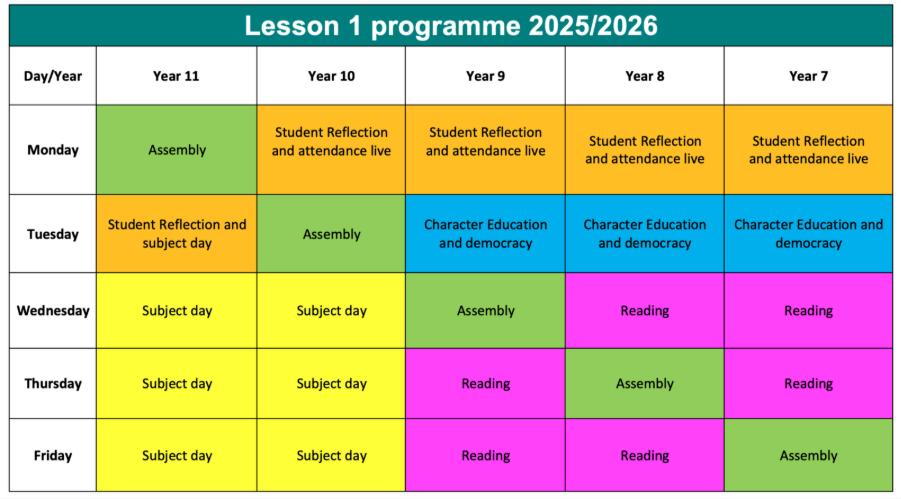
A l l T e a c h e r s a t
M 1 0 0 %
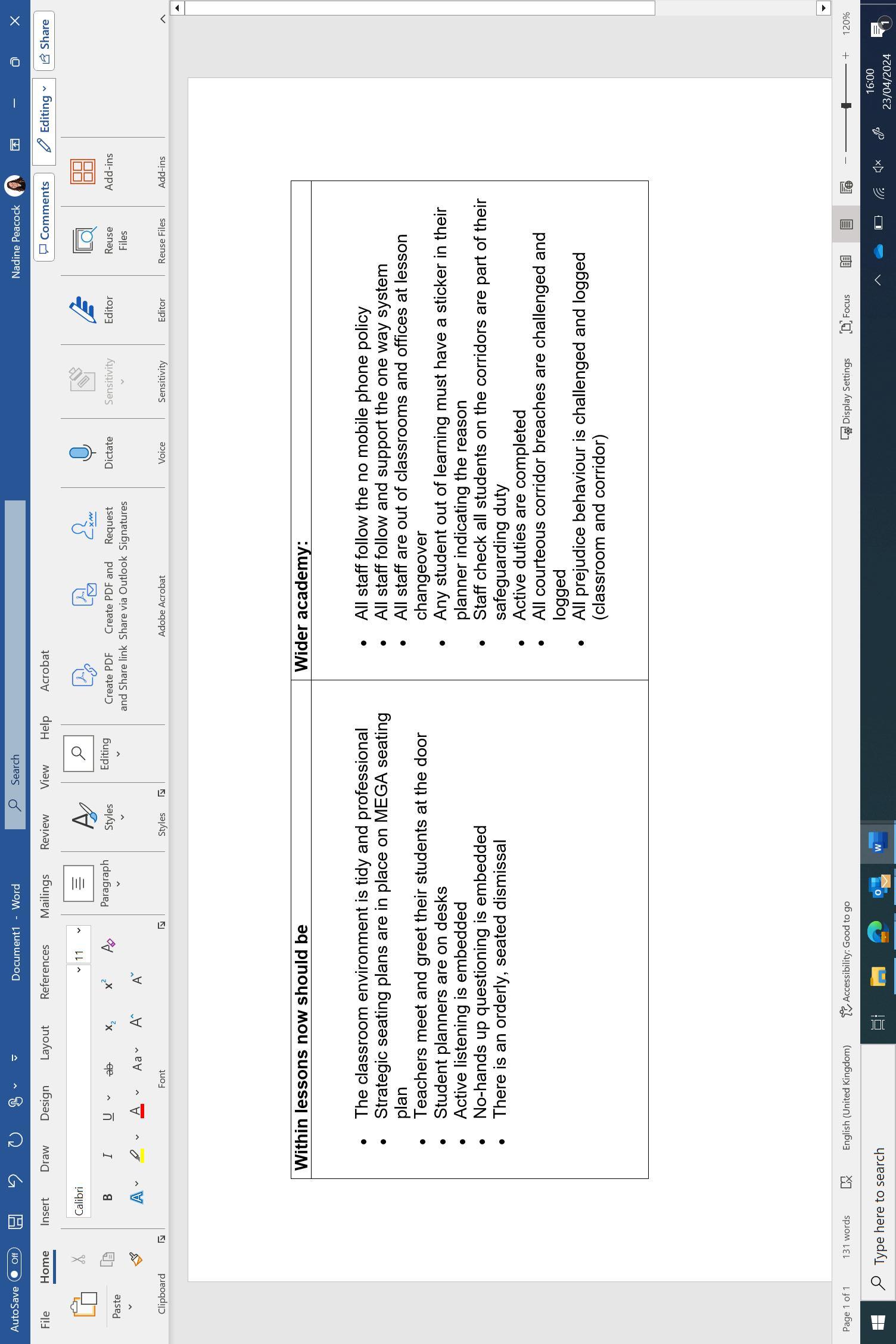
O F T H E T I M E
S i r i u s A c a d e m y N o r t h a r e e x p e c t e d t o s u p p o r t t h e A c a d e m y c u l t u r e , w i t h s o m e k e y f e a t u r e s . T h e s e a r e d o n e b y 1 0 0 % o f t h e t e a m , 1 0 0 % o f t h e t i m e .
1. That lessons are adapted from centrally planned resources to provide effective learning.
2. That teachers know that students have retained the knowledge required.
3. That teachers know that students can apply the knowledge within the context of assessment.
4. That teacher’s objectively use evidence to assess effectiveness.
Structure of the lesson:

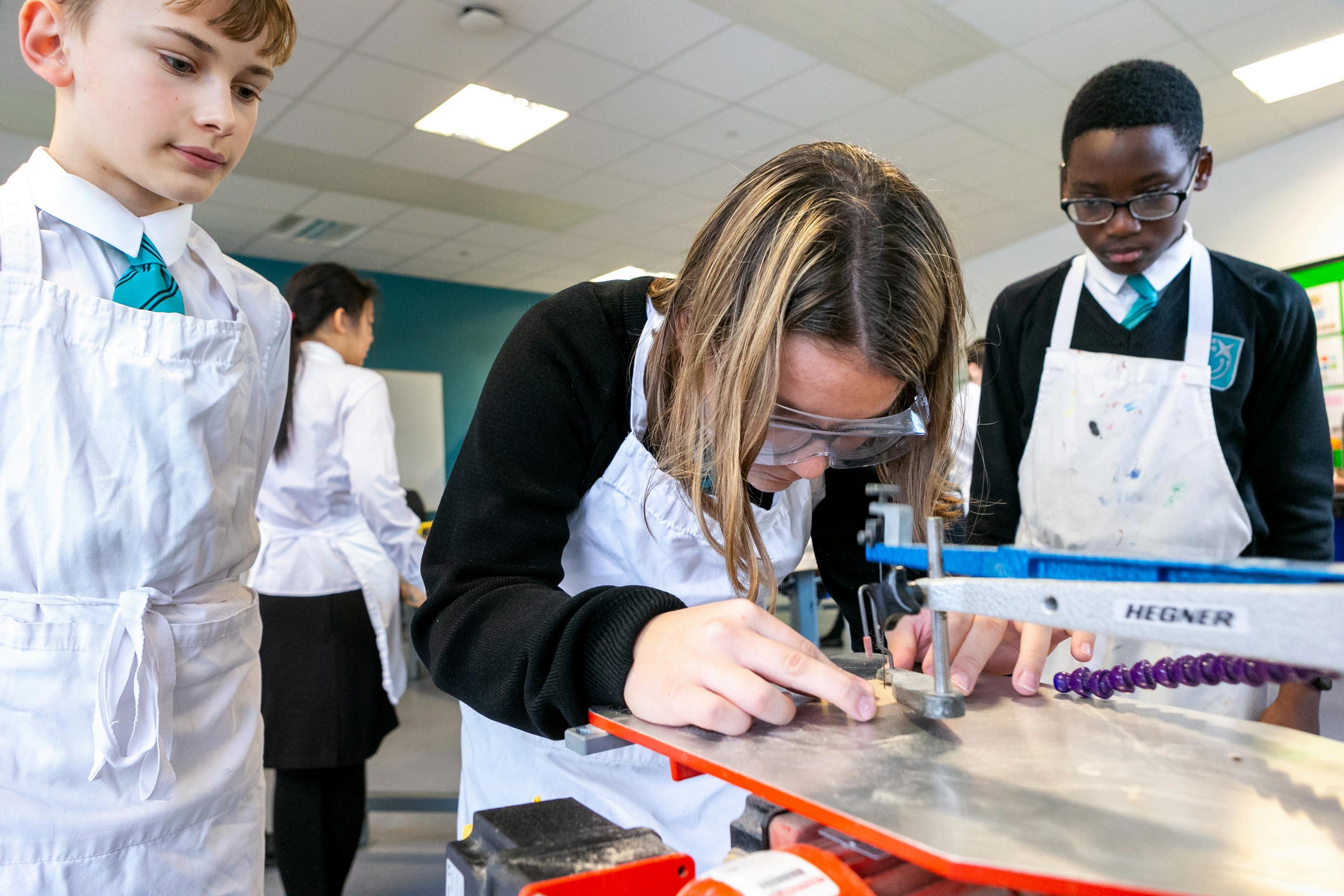
All curriculum areas support and implement the whole school approach to teaching and learning. The two main focuses are 100% of the team and the teaching and learning fundamentals.
They do however have the opportunity to specify their own subject specific pedagogical approaches for skill development, assessment, literacy and retrieval. This ensures that students have the best possible chance of success in each subject, as the delivery is tailored to be most effective.
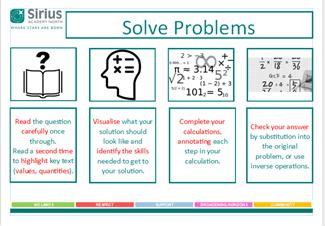

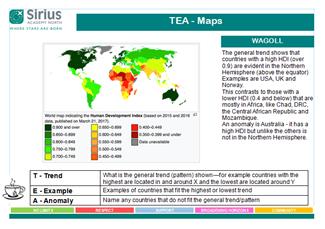

There are a small number of formal assessment points at both KS3 and KS4, although this is minimised wherever possible. Through this, we aim to gain an understanding of the knowledge and skills individuals or groups have gaps in so that the curriculum delivery can be amended to fill these gaps.
At KS3, assessments are designed to be forensic in nature, separated into knowledge and specific skill, (such as comprehension) sections, to really drill down into the specific barriers to success within each cohort. This enables the classroom teacher and middle leaders to intervene at a much earlier stage. These assessments happen at two specific designated points per year. The curriculum following each assessment point should be adapted to meet the identified need, e.g. if reading is a weakness, there is a focus on this in the forthcoming half terms.
At KS4 there are 3 mock exam series, again aiming to assess student’s current strengths and areas of weakness through question level analysis, to intervene and support them in being successful in their GCSE examinations.
All assessments are calendared. The meeting schedule accommodates analysis and marking to alleviate workload pressures for teachers.
KS3
-Forensic assessment broken down into knowledge and skill sections
-Calendared 2 x per year
-There is a consistent data analysis process at individual, class, cohort and Academy level
-Outcomes are shared with parents to inform and encourage support
-There is curriculum time set aside to address any gaps that are discovered through these assessments
KS4
-Full set of mock exams in Year 11
-Additional mock series for Maths and English
-Question level analysis done in an individual department and student level
-Strengths and areas to improve are provided to students
-Moderation takes place within department meeting time to ensure maximum accuracy in marking
U A L I T Y A S S U R A N C E
l e v e l . I t
d e r s h i p
l e a
S i r i u s A c a d e m y N o r t h i s d e v e l o p m e n t a l a n d i s u s e d t o i n f o r m s t r a t e g y a t a
l i t y a s s u r a n c e a t
Q u a
s h o u l d r e f l e c t e v e r y d a y p r a c t i c e t o m a k e u s a l l m o r e e f f e c t i v e o v e r t i m e .
C o m p l e t e d b y R e s u l t i n g A c t i o n s
p r o v i d e t e a c h e r f e e d b a c k
· C u r r i c u l u m l e a d e r d i r e c t s t e a m t o
T y p e o f Q u a l i t y A s s u r a n c e F r e q u e n c y
S L T / E x t e r n a l · F e e d b a c k p r o v i d e d t o C D –t h e y
C u r r i c u l u m S t u d y
C P D b a s e d o n f e e d b a c k
· C u r r i c u l u m l e a d e r u p d a t e s r e l e v a n t
s e c t i o n s o f D I P · P r o v i d e s o n g o i n g f o c u s f o r L L M
S t f f i d t i f i d t h t l d b f i t
· I n d i v i d u a l f e e d b a c k t o e a c h t e a c h e r
· C u r r i c u l u m l e a d e r d i r e c t s t e a m t o
C P D b a s e d o n f e e d b a c k · C u r r i c u l u m l e a d e r u p d a t e s r e l e v a n t
s e c t i o n s o f D I P
· I n f o r m s w h o l e s c h o o l s t r a t e g y · F e e d b a c k t o m i d d l e l e a d e r s t h r o u g h
l e a d e r s h i p m e e t i n g s · C P D p r o g r a m m e c a t e r s f o r e m e r g i n g n e e d s · M i d d l e l e a d e r s e n s u r e c u r r i c u l u m a d a p t a t i o n s a r e m a d e
C P D b a s e d o n f e e d b a c k
· C u r r i c u l u m l e a d e r u p d a t e s r e l e v a n t
L e a d e r s h i p i n t e r v i e w
P u p i l v o i c e W o r k s c r u t i n y 2 x p e r y e a r ( H T 2 a n d 6 )
A t l e a s t o n e l e s s o n o b s p e r t e a c h e r
M i d d l e L e a d e r s
S L T
1 x p e r h a l f t e r m
W o r k S c r u t i n y
M i d d l e L e a d e r s w i t h S L T l i n k · P r o v i d e s o n g o i n g f o c u s f o r L L M · C u r r i c u l u m l e a d e r d i r e c t s t e a m t o
s e c t i o n s o f D I P · S t a f f i d e n t i f i e d t h a t c o u l d b e n e f i t f r o m p e e r t o p e e r s u p p o r t
1 x p e r h a l f t e r m
S L T P r i o r i t y W o r k S c r u t i n y
S E N D / P P / H A
D e p a r t m e n t W a l k T h r o u g h
I n f o r m a l d r o pi n w h o e v e r i s t e a c h i n g 12 x p e r h a l f t e r m
The aim of a curriculum study is to assess the provision of a department as a whole. It is therefore comprised of multiple stages: a leadership meeting, a teacher meeting, lesson observations, student voice and a work scrutiny.
Leaders will receive an email giving them at least 24hrs notice that a curriculum study will take place in their department. This will enable them to prepare for the day, and inform SLT lead of any special events/circumstances which would prevent the identified date from being suitable.
On the morning of the study, leaders will be invited to a meeting, during which they will be asked to talk about their curriculum intent; implementation and impact. This will go from the curriculum sequencing, schemes of work and lesson resources. They will be asked about adaptations for specific cohorts and how they enable teachers to be effective in their subject, including their CPD provision.
For this meeting it is expected that they have access to: the subject curriculum sequencing, the schemes of work, lesson resources, DIP, data analysis documentation. Live digital versions of these would be preferred to printed copies.
A specific focus for the day may emerge following this discussion, for example a focus on the provision in the Emerald pathway or a specific cohort such as PP boys.
Lesson observations that take place over the course of the day will aim to evaluate typical practice of a department rather than of one individual. Teachers may therefore be observed multiple times during the day, or not at all, depending upon the line of enquiry and timings of the day. Where teachers are observed, areas of strengths and weaknesses will be shared with leaders, but no grading or judgement will be made.
Lesson observations aim to see leaders’ pedagogical choices in action, so it is best practice for the middle leaders to join these observations. That way, they can provide 1-1 feedback to teachers if requested and see the impact of their approach first hand.
Following lesson observations, a small selection of students and books will be looked at in further detail. This should follow a line of enquiry from the observations, e.g. underperformance of SEND students or challenge for HA pupils. The curriculum leader will be responsible for locating the student books in readiness for the afternoon meeting.
The work scrutiny is completed in conjunction with the student voice, asking students to interact with their books and display examples to the SLT leading the interview. This may include examples of work they’re proud of, what they remember about a specific topic/sequence of lessons, and their opinions on the method of delivery. This helps us to evaluate the overall effectiveness of teaching.
The books will then be scrutinised as per the process on page 16 to evaluate how the teaching aligns to the curricular goals, and to what extent students are making satisfactory progress.
-Select a sample that follows a line of enquiry, e.g. why are Y10 HA males underperforming? Is the revised Y9 Russia unit promoting maximum pupil progress?
-Call a manageable sample that will represent the cohort, but you can look at in detail, e.g. 3-5 books
-Print the data for the group identified or at least make sure it is easily available (this is to stay focused on the line of enquiry)
-Agree the focus with all involved, are there any key questions we want to keep coming back to?
(preferably with team)
-Follow a sequence of work through, do the students demonstrate more knowledge over time?
-If yes, what is enabling this? If not, why not?
-Does the teaching/learning match the scheme of work?
-Compare the same date in two or more books side by side, how does the work compare?
-Investigate the suitability of big questions.
-How do the connect tasks link to the big question review? Do they enable students to make more progress?
-Are the subject specific pedagogical approaches evident? What about literacy development?
-Is there any exceptional practice evident that you can immediately share with the rest of the team?
-Ensure staff receive individual feedback
-Feedback department strengths/weaknesses overall
-Update DIP T&L section
-Provide/direct team to CPD to address weaknesses
-Follow up at drop-in/next work scrutiny
At Sirius Academy North we conduct work scrutiny, not marking scrutiny, it is not useful to just check that connect marking is present. Instead, we are digging deeper into what is effective and helping students in our Academy make progress.
What’s on offer?
SCITT Programme
PGCE placements
Teachfirst placements
Peer observation
Mentoring
When can it happen?
Applications start in term 5/6 for a September start during the next academic year. Teachfirst upon request from partnered schools
What’s on offer?
3 termly reviews, including observation and reflection
In-house weekly ECT CPD
ECT CPD from delivery partner
Fortnightly mentor meetings
When can it happen?
Applications in term 6 for new staff members ECT1s continue to engage with the programme into year 2.
What’s on offer?
NPQSL
NPQH
Peer-to-Peer support
Safer recruitment training
When can it happen?
Throughout the academic year Key events scheduled.
What’s on offer?
3 termly reviews, including observation and reflection
In-house weekly ECT CPD
ECT CPD from delivery partner
Timetabled weekly mentor meetings
When can it happen?
Applications in term 6 ready to start from September.
What’s on offer?
NPQMLT, NPQLL, NPQSEND
NPQLTD, NPQSL
Shadowing SLT
Peer-to-Peer support
When can it happen?
Throughout the academic year Key events scheduled.
What’s on offer?
Twilight CPD x 6
Friday morning CPD
Online training through Every
External CPD on request Safeguarding
Child protection
Exam board training
New staff induction
Peer to Peer support
Monday night departmental CPD
When can it happen?
Ongoing and calendared.
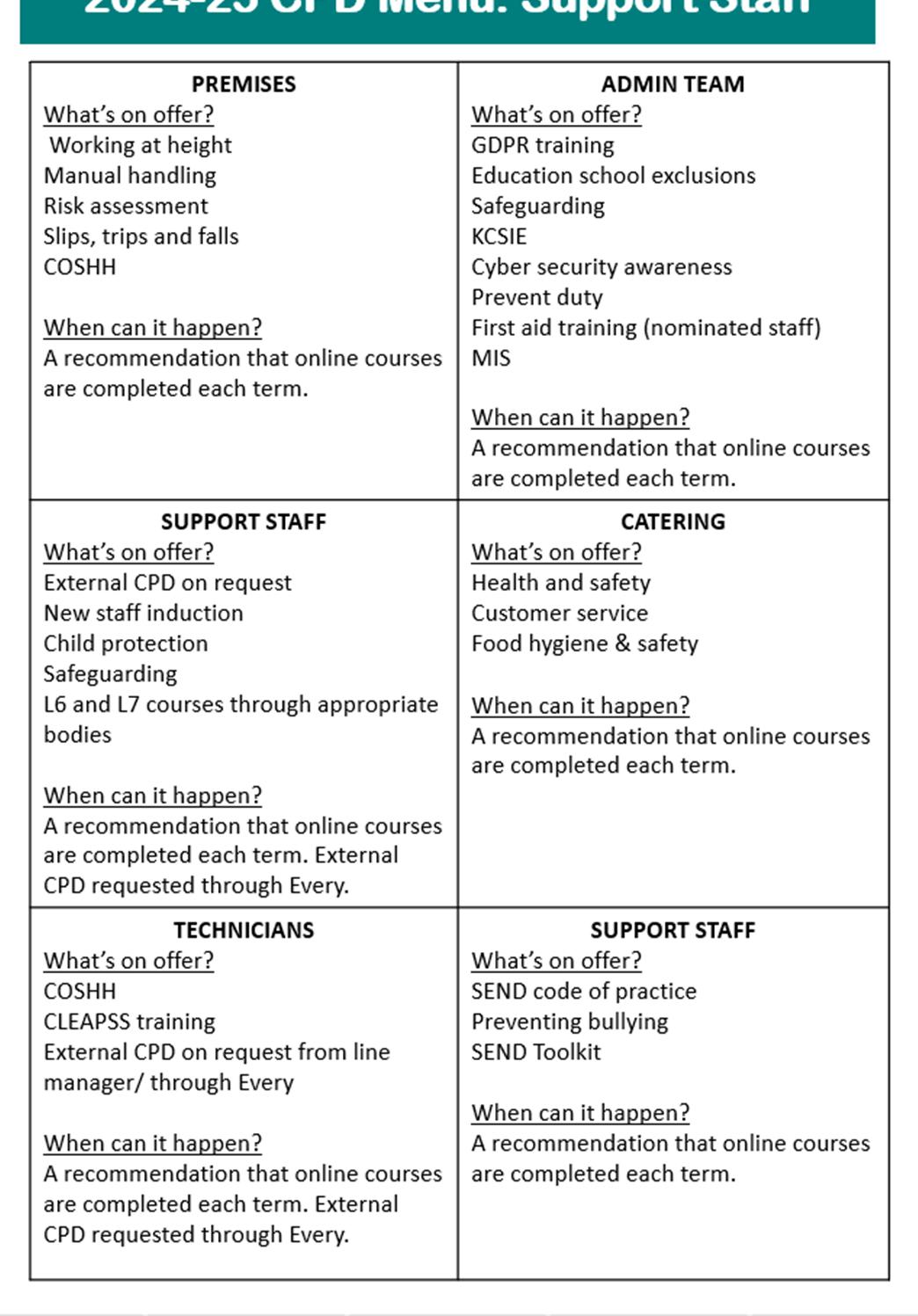
Effective support creates the environment and facilitates the space for teachers to grow and develop their personal and professional goals. The best support builds professional confidence and expertise and is based on mutual trust and respect. Our P2P support programme provides opportunities for staff to develop their staff and strive for excellence by partnering them with an identified member of staff who is particularly skilled in that area.
We are creating a culture where staff identify their own needs and selfselect themselves for P2P support. It may be an area that they feel they need support in or something which they would like to know more about in order to strive for excellence.
Within the Peer-to-Peer sessions:
Sharing professional skills – helps to build knowledge and expertise. Positive attitude – being enthusiastic, real and honest about how we deal with our own weaknesses.
Constructive feedback – outlines where improvement could be made, notes made on the ‘Moving Forward’ sheet, so staff have got something to take away and reflect on.
Working on one goal at a time to help get their pupils’ learning on track and to build the teacher’s confidence.
Example tasks to undertake in the support sessions:
1.Conduct an informal work scrutiny together
2.Joint marking session
3.Undertake some joint lesson walks
4.Joint lesson planning
5.Explore excellent practice of marking and lesson planning
The Literacy Strategy consists of four distinct strands which cover different aspects of literacy in the Academy.
Strand 1: Teach the mechanics of reading and raise the standard of reading
All students undertake a reading age test in the Autumn term to identify their current reading age. This information is then uploaded to all class lists for staff to use when planning lessons. The data is also used to help identify students for intervention. Lesson 1 literacy withdrawal:
Reading intervention is provided for students, dependent on their reading age, with different interventions provided to target different abilities and needs. The interventions include reading age-appropriate texts and phonics resources. All students have a baseline and summative assessment to determine the progress made during the intervention.
Strand 2: Embedding a reading curriculum
All students in Years 7 to 10 will have a guided reading lessons each week during lesson one to promote and model excellent reading, engage the students in more animated delivery, and strengthen listening skills. Groups are given comprehension questions each week to complete after the guided reading to assess understanding and to promote oral discussion about the texts.
Students in Years 7 to 9 have a timetabled Reading curriculum lesson, independent to their English lessons. Students read full texts with their class which are read aloud by the teacher, followed by activities to complete to check for understanding and comprehension. All students in Years 7 to 9 will complete Sparx Reader for their weekly homework. Sparx Reader is an electronic programme designed to improve reading comprehension and consequently students' reading ages. Students are allocated a novel to read which is tailored to their specific reading age.
Strand 3: Boosting literacy throughout the curriculum
Literacy is integral to the Academy’s lesson fundamentals, including:
Reading and extended writing SSP
Essential literacy information included in the digital staff planners
Pages added to the student planner for students to complete with ambitious vocabulary
Literacy sessions calendared for departmental CPD meetings
We have a whole-school focus on Oracy. This is because pupils who enter school with spoken language in line with age-related expectations are more likely to develop literacy effectively, achieve better academically and have improved wellbeing (Law et al., 2017a). Pupils’ cognitive development is supported through the development of talk. High-quality classroom discussion supports pupils to articulate their ideas, consolidate their learning, build their vocabulary, understand more about texts and prepare for writing (EEF, 2021).
Strand 4: Broadening horizons through enrichment and reading for pleasure We commit to developing a culture of enjoyment about reading to improve students’ cultural capital. As well as promoting national events, such as World Book Day, we also deliver our own annual Lit Fest and half-termly Spelling Bees. The school library provides a wide range of books for our students and is open before school, at break and lunchtime, and after school. It is a focal point in school and a supportive environment for readers
Reading Routes is a reading initiative designed to foster a love of reading for pleasure, whilst widening the cultural experiences of our students, and ultimately broadening their learning beyond the curriculum.
Reading Routes offers our students the chance to select and read books of different genres for all abilities and interests. Students are then provided with opportunities to discuss and read the texts in school to promote independent reading. Each route comprises of five books and a different route is promoted in school each half term.
Students choose their books from the featured route, or ‘hop off’ and try a different genre on another route.
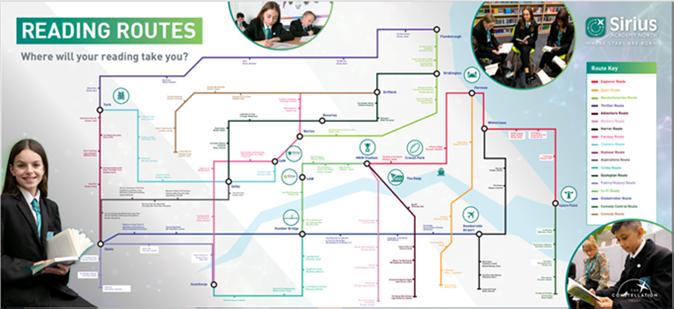


Strategies in this guide are designed to link together, not work in isolation, to enhance the quality of education at Sirius Academy North. The joined-up thinking, whilst working in line with our curriculum principles, should also reduce workload for staff. There are additional features of our deliver that do not necessarily fit into the headings above, but further support the successful implementation, detailed below:
Online practice through Sparx Maths, Sparx Reader and Sparx Science plus engaging KS3 homework projects.
Centralized, consistent displays
Enrichment curriculum that supports classroom learning
Personal Development mapped across the curriculum
Competitions
Rewards
Cultural capital display information in department areas
Lesson 1 features such reading, character education
Careers calendar that is woven into the curriculum, with all year 10 completing work experience


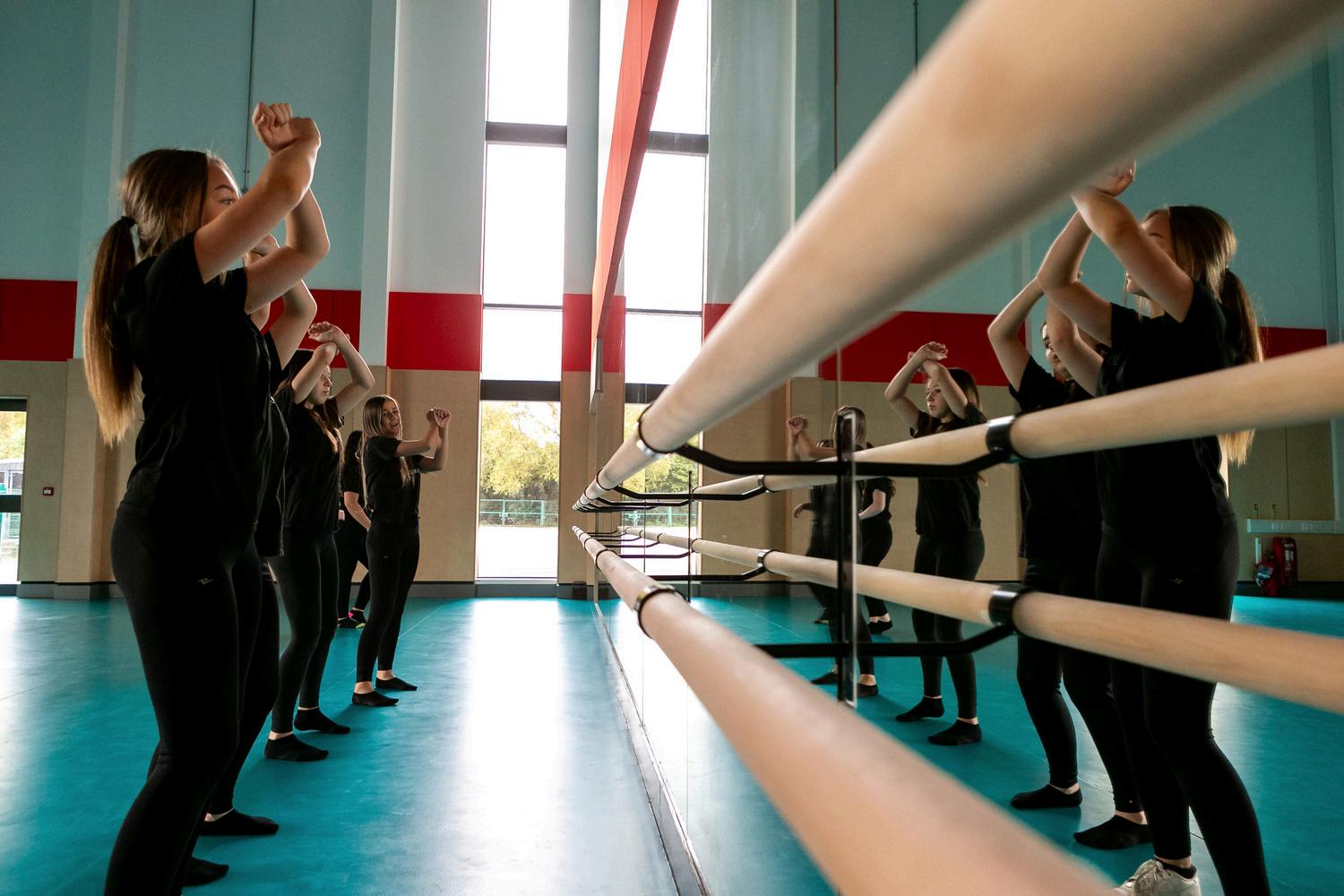
M E E T I N G S C H E D U L E
t i n g s h a v e a p r e p a r e d s t r u c t u r e t h a t a l i g n s w i t h t h e c u r r i c u l u m p r i n c i p l e s , t o e n s u r e t h a t w e a l w a y s s t a y
e e
M
F r e q u e n c y
f o c u s e d o n t h e A c a d e m y a i m s .
D e s c r i p t i o n
8 : 0 0 a m
M o n
R a p i d b r i e f i n g t o d i s c u s s m a t t e r s a r i s i n g f o r t h e w e e k
S c h o o l
M o n 3 : 1 54 : 3 5
S u b j e c t l e d C P D w i t h a f o c u s o n :
S u b j e c t k n o w l e d g e ; s u b j e c t p e d a g o g y ; w o r k s c r u t i n y ; d a t a
8 : 0 0 a m
D a i l y
D a i l y b r i e f i n g f o r a c t i o n s r e l a t i n g t o a b s o l u t e s
3 : 0 54 : 3 0
W e d
f o r t e a c h e r s n e a r t h e
d d i t i o n a l C P D
A
s t a r t o f t h e i r c a r e e r o r t e a c h e r s i d d i i l C P D i
2 k e y f o c i d i s c u s s e d i n d e p t h e a c h w e e k , 1 S L T l e a d p r e s e n t s a n d o p e n s d i i T u e s 4 : 1 55 : 3 0
K e y f o c i f o r t h e h a l f t e r m d i s c u s s e d a n d s t r a t e g i c a c t i o n t a k e n . 1 p e r h a l f t e r m
1 p e r h a l f t e r m
S e e t a i l o r e d t w i l i g h t s e c t i o n f o r f u r t h e r i n f o .
F r i 8 : 1 5 a m
C a l e n d a r e d w i t h i n t h e s c h o o l d a y
A t t e n d e e s
D e p u t y H e a d s a n d H e a d o f
3 x
A l l t e a c h i n g s t a f f
Y L a n d A Y L
I T T s / E C T s a n d A l l s t a f f o n v o l u n t a r y
b a s i s
K e y m e s s a g e s f r o m I R N .
M e e t i n g w i t h L L M e v e r y 13 w e e k s
f o c u s i n g o n A D P / D I P p r o g r e s s a n d i
M e e t i n g
D e p u t y b r i e f i n g
D e p a r t m e n t C P D
B r i e f i n g
P a s t o r a l
I T T / E C F C P D
S L T M e e t i n g s A l l S L T a n d i n v i t e d g u e s t s e g H o D
M i d d l e L e a d e r s h i p M e e t i n g s C u r r i c u l u m L e a d e r / L e a d
P r a c t i t i o n e r / Y L
A l l s t a f f
A l l s t a f f
A l l l e a d e r s
T w i l i g h t T r a i n i n g
S t a f f B r i e f i n g
L L M M e e t i n g s
T h e r e a r e a l s o a n n u a l e v e n t s s u c h a s c u r r i c u l u m d e v e l o p m e n t d a y s a n d t r a i n i n g d a y s t h a t a r e i n c l u d e d o n t h e
A c a d e m y c a l e n d a r .
